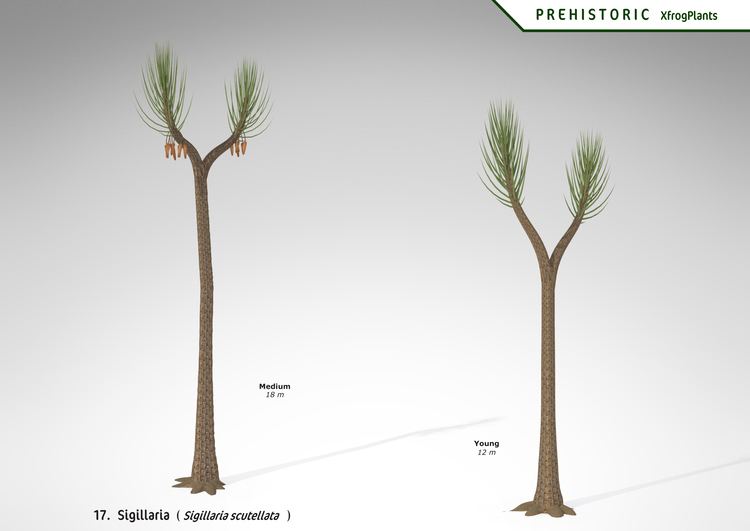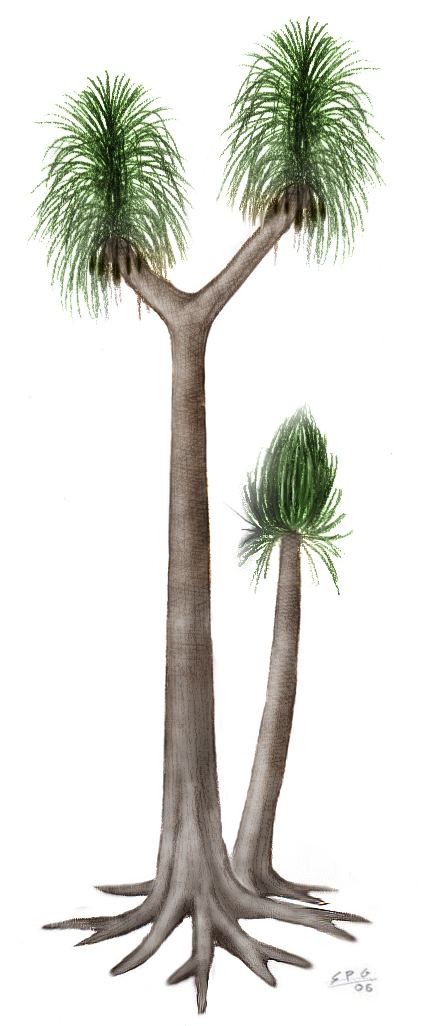Scientific name Sigillaria Rank Genus | Division Lycopodiophyta Family Sigillariaceae Higher classification Lepidodendraceae | |
 | ||
Similar Lepidodendron, Calamites, Lycopodiophyta, Stigmaria, Cordaites | ||
Sigillaria is a genus of extinct, spore-bearing, arborescent (tree-like) plants. It was a lycopodiophyte, and is related to the lycopsids, or club-mosses, but even more closely to quillworts, as was its associate Lepidodendron.
Contents
- Sigillaria1
- part one Sigillaria plant fossil relative of clubmoss Carboniferous period Dec 22 2019
- Fossil records
- Species
- Description
- References
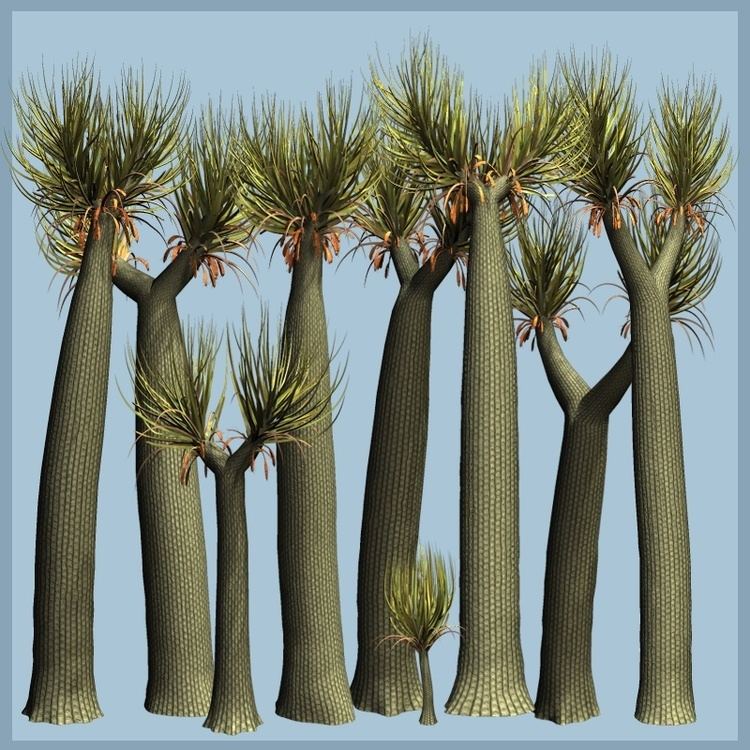
Sigillaria1
part one: Sigillaria plant fossil relative of clubmoss Carboniferous period Dec 22 2019
Fossil records

This genus is known in the fossil records from the Late Carboniferous period but dwindled to extinction in the early Permian period (age range: from 383.7 to 254.0 million years ago). Fossils are found in United States, Canada, China, Korea, Tanzania and Zimbabwe.
Species
Species within this genus include:
Description
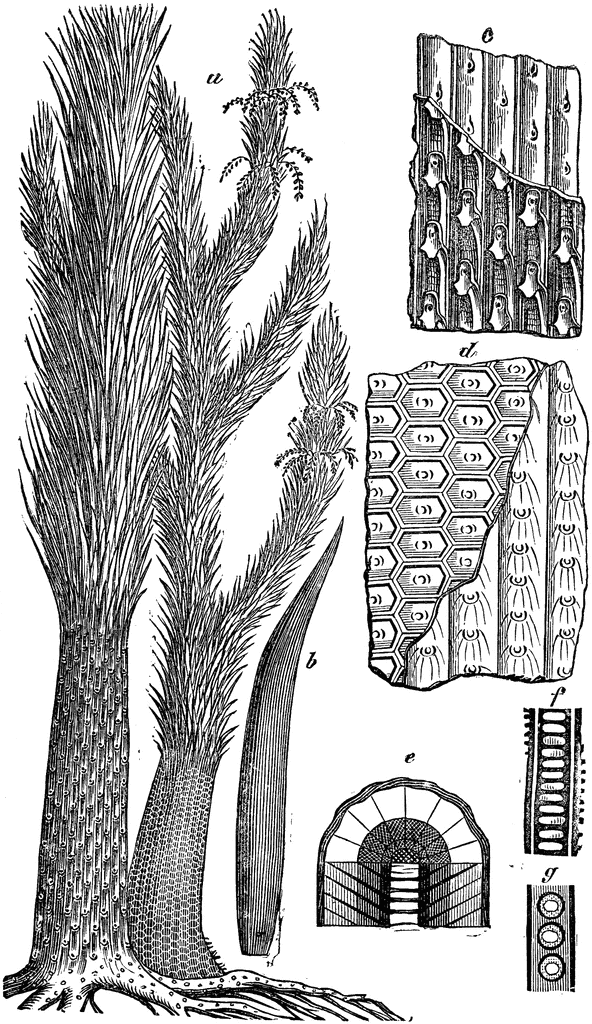
Sigillaria was a tree-like plant reaching a height up to 30 meters, with a tall, single or occasionally forked trunk that lacked wood. Support came from a layer of closely packed leaf bases just below the surface of the trunk, while the center was filled with pith. The long, thin grasslike leaves were attached directly to the stem and grew in a spiral along the trunk. The old leaf bases expanded as the trunk grew in width, and left a diamond-shaped pattern, which is evident in fossils. These leaf scars were arranged in vertical rows. The trunk had photosynthetic tissue on the surface, meaning that it was probably green.

The trunk was topped with a plume of long, grass-like, microphyllous leaves, so that the plant looked somewhat like a tall, forked bottle brush. The plant bore its spores (not seeds) in cone-like structures attached to the stem.
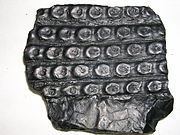
Sigillaria, like many ancient lycopods, had a relatively short life cycle - growing rapidly and reaching maturity in a few years. Some researchers have suggested that Sigillaria was monocarpic, meaning that it died after reproduction, though this is not proven. It was associated with Lepidodendron, the scale tree, in the Carboniferous coal swamps.
